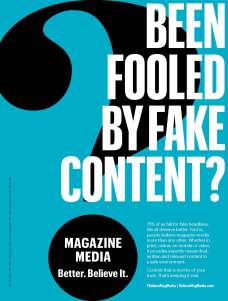 He was an international icon of publishing. When billionaire publishing magnate S.I. Newhouse died last week, many called it the “end of an era” for the glossy publishing industry.
He was an international icon of publishing. When billionaire publishing magnate S.I. Newhouse died last week, many called it the “end of an era” for the glossy publishing industry.
“When Si Newhouse died this week at the age of 89, the page turned on a golden era in publishing,” write Matthew Garrahan and Shannon Bond in Financial Review. “More than anyone else, the shy billionaire owner of Condé Nast forged the modern, glossy magazine with its flair for portraying the luxury lifestyles of the rich and famous. He turned titles such as Vogue, Vanity Fair and highbrow The New Yorker into international brands, renowned as much for the quality of their journalism as their reader loyalty and commercial success.
“But times have changed in the magazine world and even the most prestigious titles are being challenged by the never-ending penetration of the internet and its abundance of free news and entertainment,” they continue.
The authors cite current events in publishing – including the potential sale of Rolling Stone magazine by publisher Jann Wenner – as more evidence that the industry is forever changed … and not necessarily for the better.
“Few titles have been spared the downturn, which has led some publishers, Jann Wenner among them, to think the unthinkable,” they write. “The founder of Rolling Stone, the rock-and-roll magazine that embodied the freewheeling, no-holds-barred journalism of writers like Hunter S Thompson, is selling the title, conceding defeat after 50 years in charge: he told the New York Times recently that ‘publishing is a completely different industry than what it was.’”
Yet I’d argue that, at least in Rolling Stone’s case, it may be more about trust and relevance than anything. When the title became the lightning rod for the shocking campus rape controversy, it publicly broke trust with its readers. That trust – one of the saving graces of the magazine industry – is inviolable. Once broken, not much remains to sell.
That’s not to say they weren’t having challenges before this; but take away the trust and seriously, what’s left in a media brand?
Meanwhile, yes, mass-market titles are certainly facing challenges – yet many publishers are boldly rising to the occasion.
As the authors note, many are capitalizing on their brands by taking them into new areas.
“Condé Nast International has launched a fashion college in London as well as Vogue cafés in Moscow and Dubai, and a GQ Bar in Berlin,” the authors write. “This week its US cousin staged the Vanity Fair New Establishment Summit backed by sponsors such as HBO and Dom Pérignon and featuring figures from media and technology, with tickets costing $US6,500 each for the Beverly Hills event.”
Can these newly expanded multi-channel audiences ever bring in the kind of revenue of the golden age of magazines?
“Tina Brown, the former editor of Vanity Fair and The New Yorker, does not think they can: this year she will publish her diaries spanning her years as Vanity Fair editor from 1983 to 1992, a time that she says was ‘a golden era … one that has conclusively ended’,” the authors note.
Yet others currently working in the business remain positive.
“We do so many more things with our brands now – events, films, festivals, restaurants … there are so many different channels,” said Albert Read, managing director of Condé Nast Britain, quoted in the article. “From my perspective, it’s odd to hear predictions of the demise of magazines when, if correctly managed, they are simply evolving into more complex organisms with audiences that have actually never been bigger.”
Print magazines – still the preferred medium for consuming magazine content – have an allure that survives the upheavals. The trust, the engagement and indeed the very type of reader that a glossy pulls in is the key to its survival.
Changed forever? Yes, no doubt, and we all owe a huge debt to the legacy of Newhouse and others of his ilk. But done and gone? Not in our lifetimes.
